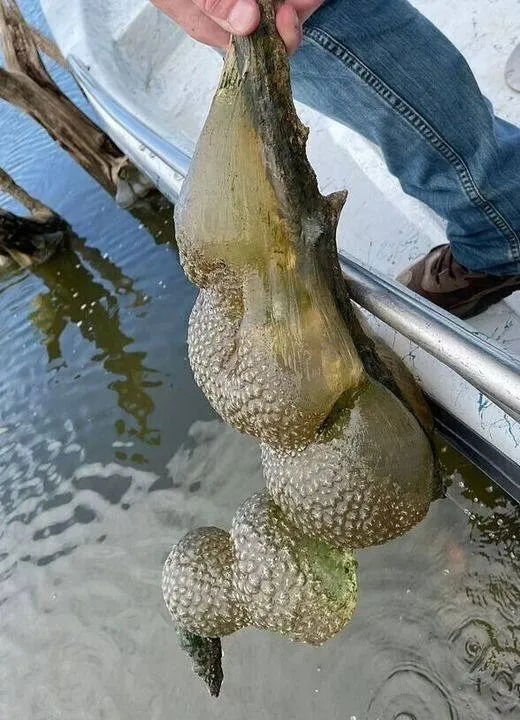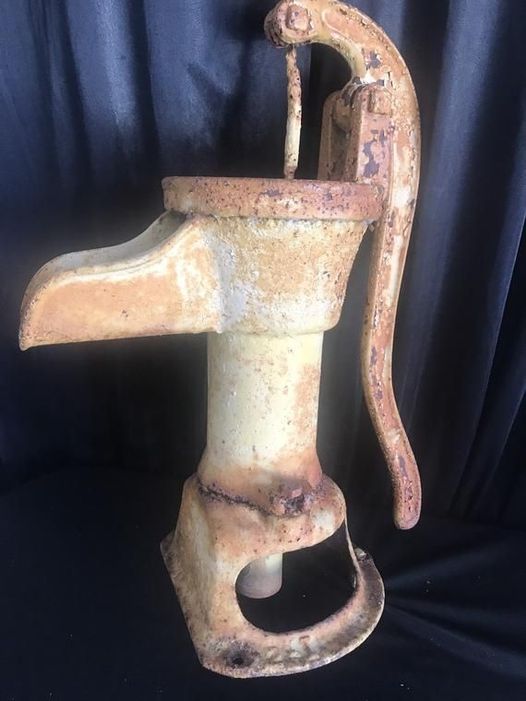
Residents are being alerted by wildlife officials to the presence of “alien egg pods” in murky lake waters throughout the United States.
The gooey creatures, who have the startling ability to clone themselves, are not afraid to attract attention and are proliferating.
Images of “jelly-like balls” being drawn out of water systems, such as rivers and lakes, have been circulated by people all over the world.
The strange, sticky-looking sacs, which seem to contain thousands of eggs, are found underwater and are usually affixed to a rock, branch, or dock.

One worried internet user comments, “What in the alien invasion is this?” in reference to a picture of the enormous creature that was circulated on social media.
One says, “They look like alien egg pods from outer space,” while another says, “My oldest son thought they were body snatchers just waiting to hatch and take our bodies.”
Do not panic.
However, if people come across these “strange jelly-like balls hanging from submerged tree limbs,” the Oklahoma Department of Wildlife advises them not to “be alarmed.”
They are “native and are of no danger to you or wildlife.” These microbes are called bryozoans.
https://www.facebook.com/plugins/post.php?href=https%3A%2F%2Fwww.facebook.com%2FEerieEnigmaFiles%2Fposts%2Fpfbid0zCHhbnS6hM9X5NhdFcXsoZ689TedBkJihee2SnrS5W7tj5yaSFxo1s3cBa8xpQTdl&show_text=true&width=500
The tiny aquatic invertebrates, which date back up to 470 million years—older than dinosaurs—are only 4 millimeters in size as individual zooids. They “continually clone themselves until they create a large mass where they filter tiny particles out of the water for food,” as they possess both male and female reproductive organs.
According to the department, the presence of filter-feeding bryozoans in water is a sign of high water quality. “These animals are an important part of the ecosystem because they help clean the water and serve as prey for mussels, snails, and even small fish,” the department writes.

With the exception of Antarctica, where the water is too cold, bryozoans are found on every continent. They “often spread through water connectivity or even by passing through the intestinal tract of fish or birds!”
Gentle shells
The slimy sac is actually “a soft shell made of a substance called chitin that can harden when dried up to preserve the organism until rehydrated,” despite the fact that it may appear and feel like jelly underwater.
The animals are like delicate coral, according to the U.S. Fish and Wildlife Service. However, coral creates robust structures that endure long after the creatures they support have passed away. Calcium carbonate is also used by bryozoans to create structures, though they are much more delicate.
This is the post: https://www.facebook.com/OkWildlifeDept/posts/805869154913188?ref=embed_post
Even though they proliferate in the summer, the colonies primarily perish in colder climates, but not before releasing tiny egg sacs known as statoblasts that will aid in the development of new colonies the following spring.
All I can think about is what would happen if I touched it or it touched me in the water. One Facebook user who was unnerved by the pictures says, “I would freak out.”
A second says, “Wonderful, another ick that will make me jittery in the water.”
They’re not actually ancient invertebrates, according to a third joke: “America, that’s what the government wants you to believe!”
Have you ever come across these animals in nearby bodies of water? So that we can hear about other people’s experiences, please share this and then share your stories with us!



